
"Is there a felicity in the world superior to this?" Marianne said. - Sense and Sensibility: Volume I, Chapter 9, Jane Austen
The years spanning from around 1800 to 1820 are commonly referred to as the Regency era and were renowned for a simpler, less complicated style. The indulgent aristocratic excesses of the 1700s were replaced with a naturally elegant aesthetic in fashion and accessories that deliberately emulated the grace and poise of Roman and Greek statuary. Such simplicity in fashion brought a true appreciation for small details and quality craftsmanship. Likewise, the social manners of the era were unparalleled in polite decorum. One of the most recognized representations of this era is the much-celebrated literature of Jane Austen.
The Regency Style
The Regency Color Palette
Choosing the right colors to translate the Regency look into jewelry is one of the most important elements. kock-lee-co, first recorded as a color name in 1795, was a saturated poppy red with hints of pink and orange. This color today can be achieved with the use of padparadscha, hyacinth and Indian red Swarovski crystal beads. To appreciate these key colors, it is important to be familiar with the color names of the age that were both curious and puzzling. For instance, the color coquelicot, pronounced Jonquil, primrose and evening primrose were all varying shades of yellow akin to the blooms they were called after. These yellow colors added warm, optimistic color to the Regency palette. Sunny jonquil and sand opal Swarovski crystal colors can closely translate these colors. Pomona, a dark shade of apple green was named for the Greek goddess of fruiting orchards. Paris green was similar to chrysoprase in hue and was popular because it was the first colorfast green available. Unfortunately, it was produced by mixing copper arsenic powders and other toxic chemicals. Pomona and Paris green colors can be incorporated into jewelry with the use of palace green opal and erinite Swarovski crystal colors as well as green quartz and apple green chrysoprase gemstone beads. Of course, the staple colors of white, Spanish brown, dove grey, powder blue, pale lilac, peach blossom and wild rose were incorporated into the everyday wardrobe in great abundance. Today, jewelry designers often use ivory instead of a crisp white to give their Regency-inspired jewelry designs the look of age. Another color name that may surprise is that of puce (p-YOU-ss), the French word for flea. Indeed, the color was known to be similar to the brownish purple-red of old blood that could be found in the pests. Incredibly, even with its odd name origin, puce was one of the top fashion colors used! Easily incorporate the puce color into jewelry designs by using garnet gemstone beads or Swarovski crystal maroon pearls or ruby and burgundy crystal colors. |
Recreate This Style
Regency-era jewelry designers valued quality over quantity when it came to materials, selecting high quality precious and semi-precious gemstone beads such as emerald, sapphire, citrine, ruby, garnet, onyx, amethyst, chrysoprase, aquamarine, peridot, topaz, bright "Persian blue" turquoise and of course cultured freshwater pearls. Fine gold-filled and sterling silver metals were used and often times, they were mixed together in floral filigree designs that echoed the embroidery seen on empire-waist gowns.
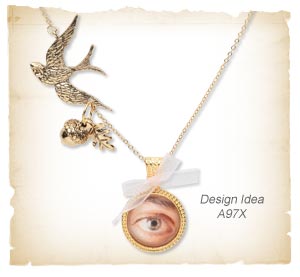
This secret locket consisted of a picture of just the eye of a beloved person with perhaps the eyebrow and a wisp of hair on the temple showing. The secret love locket was a way to discreetly hold your love near your heart at all times. You can emulate these portrait styles by embedding a loved one's printed likeness into pourable resin, encapsulating it under a clear glass cabochon in a mounting or decoupage it with Mod Podge.
The most common jewelry styles worn were a single strand of beads knotted together with a fantastic clasp, a fine gold chain necklace with dainty crystal drops with matching earrings or a petite portrait brooch. Pearl strands and velvet ribbon were commonly paired with faceted gemstone beads or cameo sets. Hair jewelry was also highly popular at this time including combs, pins, picks and tiaras. The tradition of a "lover's eye" locket was also the height of fashionable accessories.
Overall, jewelry designs tended to be heartfelt with deep personal meanings, being small in scale and sentimental in nature. Incorporate symbols popular to the Regency era with charms, drops and components in Greek key patterns, acorns, doves, wheat sheaves, feathers, miniature portraits, lockets, cameos and floral mosaics.
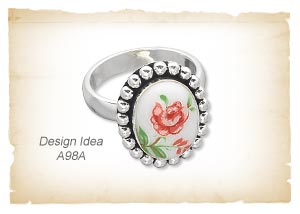
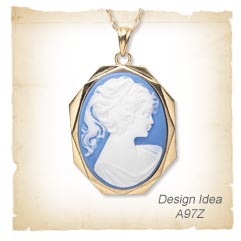
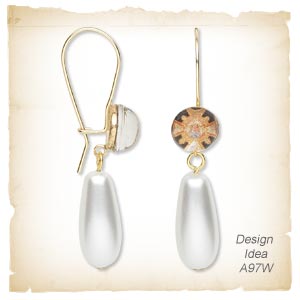














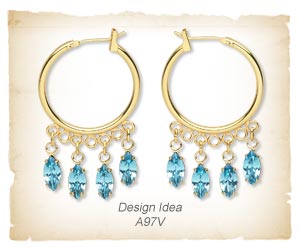
No comments:
Post a Comment